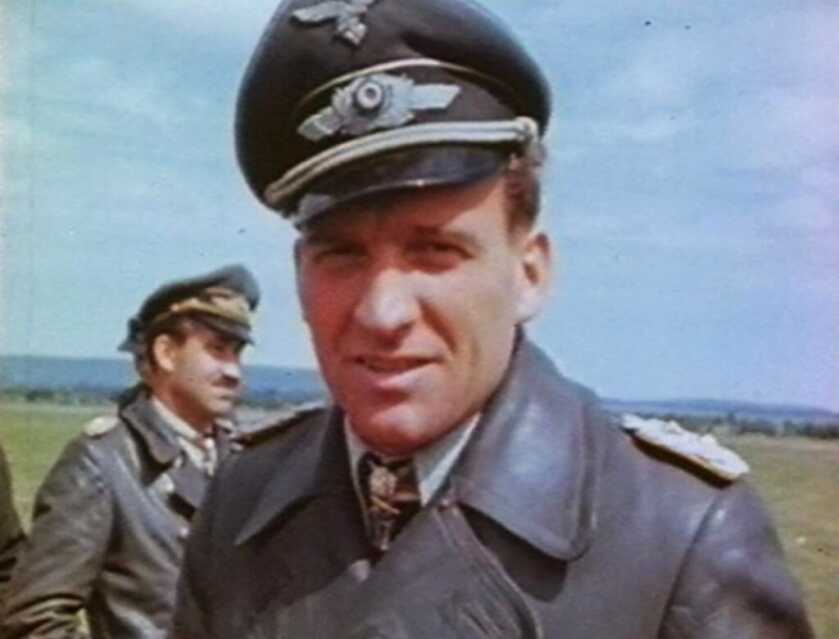
Hans-Ulrich Rudel was born in 1916 in Konradswaldau, Prussia. The third child of a Lutheran minister, Rudel did poorly in school. However, he was a skilled woodsman.
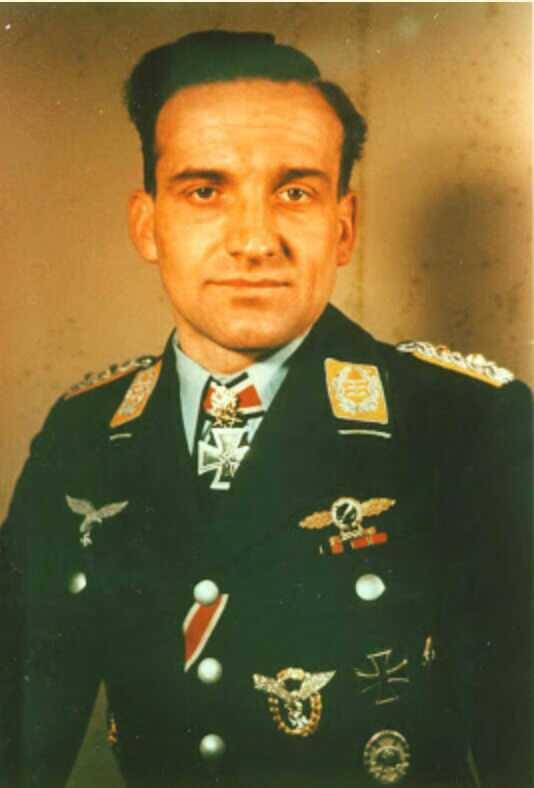
At age eight, young Hans-Ulrich broke his leg jumping off a roof with an umbrella. Rudel joined the Hitler Youth in 1933 at age 17 and liked what he heard. As soon as he was able Rudel signed up for the Luftwaffe.
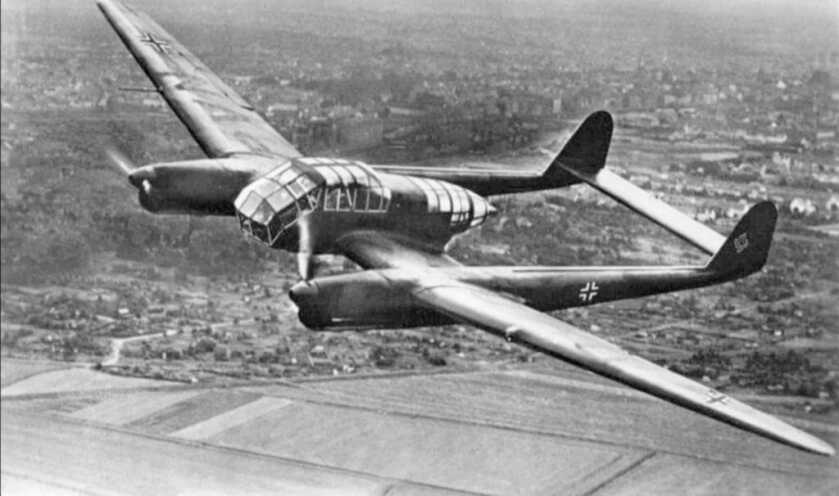
During the 1939 invasion of Poland, Rudel served as an aerial observer, flying his first combat missions on long-range reconnaissance flights over Polish military installations. Following the successful invasion, he served in a training regiment based in Vienna. In 1941 Rudel completed training as a Ju87 Stuka pilot.
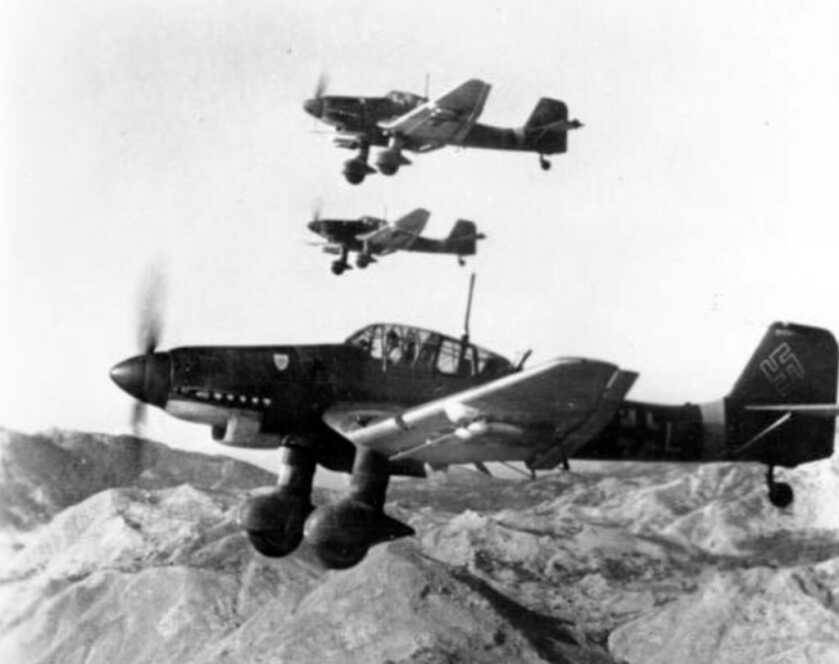
In June of 1941, Germany invaded the Soviet Union with some 3.8 million troops. This marked the largest military invasion in human history. One of those 3.8 million men was Hans-Ulrich Rudel. Rudel found that he had a gift behind the controls of the Stuka dive bomber.

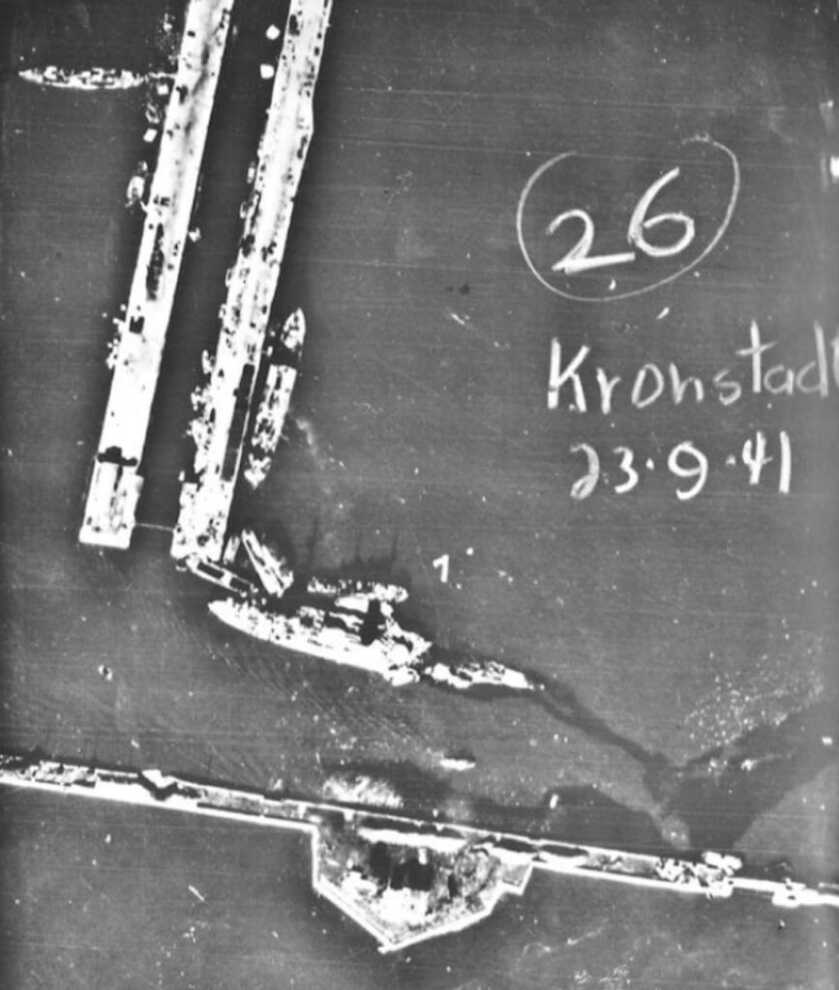
On the morning of September 21, 1941, the Soviet battleship Marat sat moored at Kronstadt after having provided naval gunfire support for Soviet troops defending Leningrad. Rudel piloted his Stuka dive bomber as part of a flight tasked with taking out this hulking Soviet dreadnaught. Several Stukas drove home the attack, but Rudel’s scored. He struck the massive Soviet vessel with a 1,000kg (2,200lb) bomb vicinity of the forward superstructure.
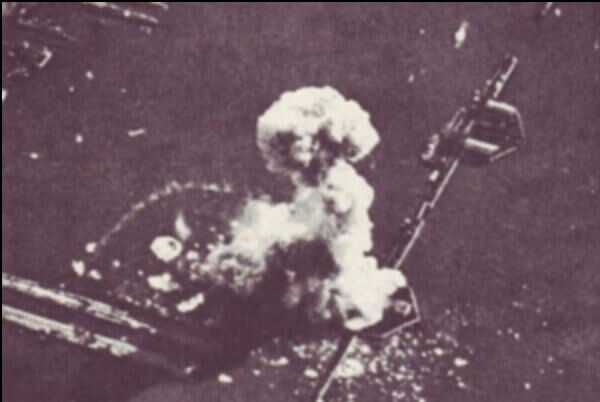
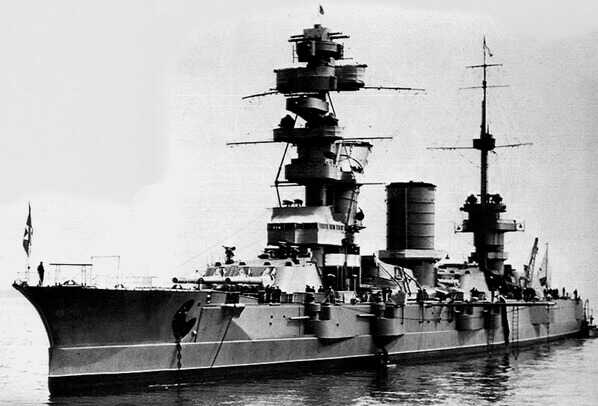
The resulting explosion detonated the forward ammunition magazine, blowing the bow off the ship. The vessel sank into 11 meters of water. 326 Russian sailors were killed. With a whopping six months’ experience as a Stuka pilot, Hans-Ulrich Rudel had bagged himself a battleship.

For the next two and one half years Rudel flew with the same gunner/observer, Erwin Henschel. Both men were awarded the Knight’s Cross for their heroism in fighting the Russian hordes in the East. Hentschel eventually flew 1,400 sorties seated behind Rudel as he hunted tanks across the Eastern Front.
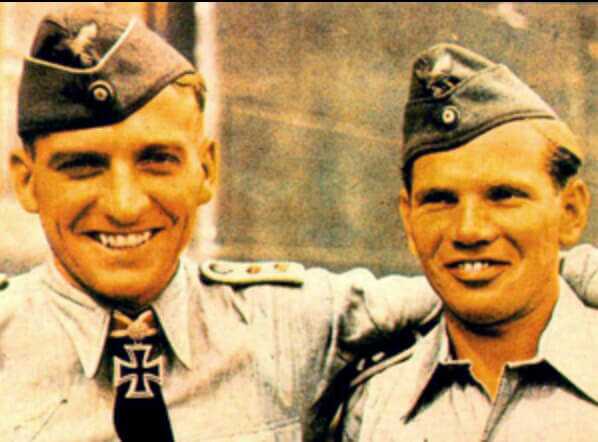
On March 21, 1944, Rudel and Hentschel landed behind enemy lines in an attempt to rescue a downed German aircrew. However, their Stuka bogged down in the Russian mud. As they evaded back towards friendly forces on foot they were forced to cross a swollen river. Erwin Hentschel drowned in the attempt.
The Plane
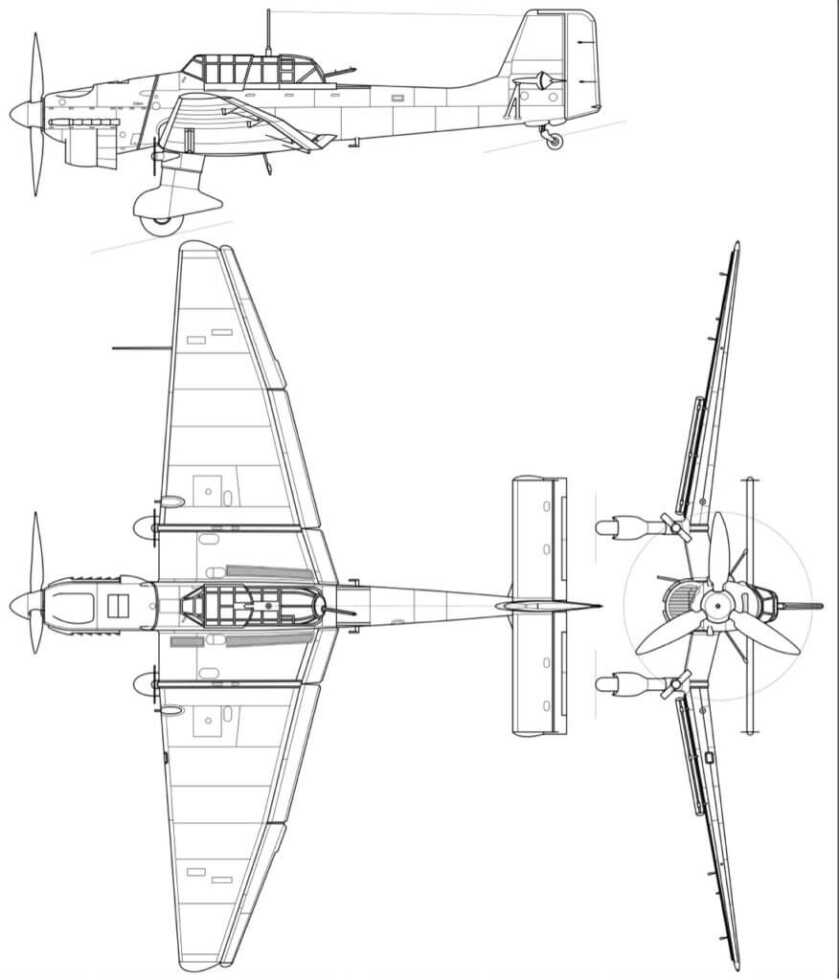
Stuka is short for Sturzkampfflugzeug or “dive bomber.” The Germans always had a gift for breathtakingly complex words of that sort. Design efforts began in 1933, and the Ju 87 Stuka was declared operational four years later. An unusually sturdy, robust design, the Ju87’s landing gear was fixed and faired. The Stuka was one of the world’s earliest all-metal cantilevered combat monoplanes. It featured a crew of two who entered through separate sliding canopies. The plane was designed from the outset to be readily maintainable in austere environments.

Most Stukas featured an inverted-Vee Junkers Jumo 211 water-cooled 12-cylinder engine that put out up to 1,400 horsepower. Large airframe segments were designed to be exchangeable in the field. Offensive armament on most early Stukas consisted of a pair of MG17 7.92mm machineguns fitted in each wing outboard of the landing gear to fire clear of the propellor arc. The observer had a single 7.92mm MG15 facing rearward for defensive use.

Dive bombing put a simply terrific strain on both the Stuka and its crew. Realizing that the g-forces involved could render a pilot unconscious, the Ju87 incorporated a novel automatic pull-out system into the flight controls. Upon release of the bomb, the plane initiated an automatic pull-out and climb maneuver. The pilot could override this function, but this kept the crew flying if they were incapacitated during their attack run.
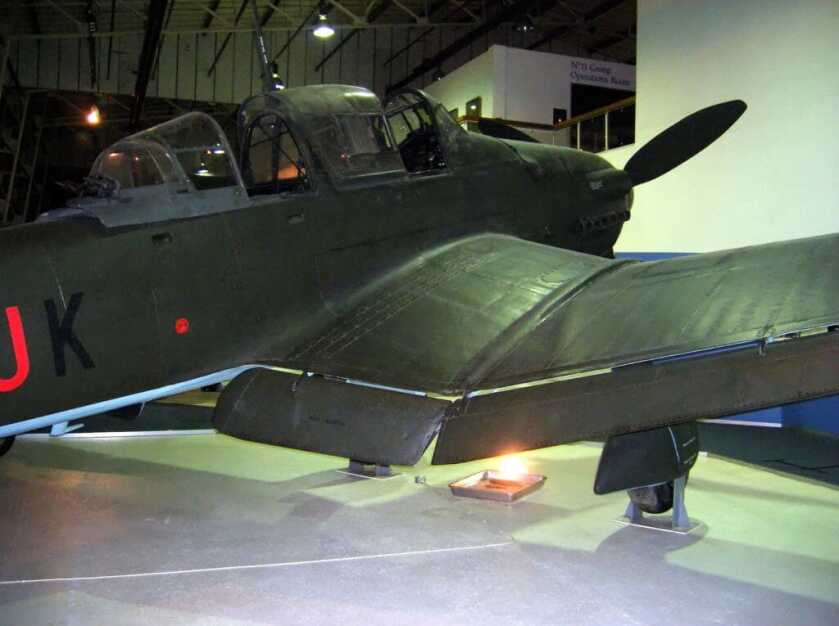
The Stuka’s most obvious anatomical feature was its enormous gull wing structure. This inverted gull or “cranked” design facilitated shorter, stronger landing gear and afforded better visibility for the crew. A trapeze-like mechanism pivoted the bomb underneath the propellor arc upon release. On the receiving end, the most compelling aspect of the design was the propellor-driven “Jericho trumpet” siren. These psychological weapons struck terror in troops subjected to the marauding Stukas.
The Tank Buster
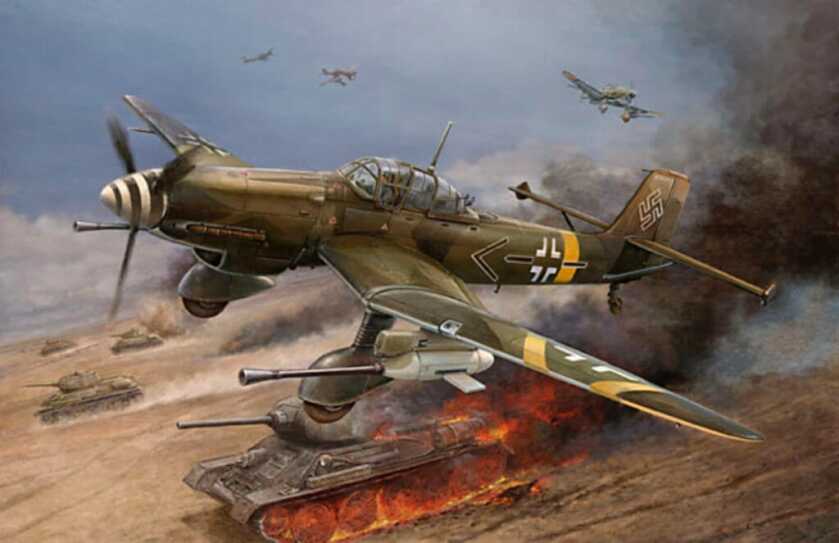
As the war in the East ground on it became clear that the primary threat was the swarming mass of Russian armor. Mass-produced T34 tanks soon began to overwhelm the Wehrmacht. In response, German designers produced the Ju87G, a dedicated tank-buster variant of the Stuka. The Germans called this heavily-armored plane the “Kanonenvogel” or “Cannon Bird.” Ground troops called it the “Panzerknacker” or “Tank Cracker.”
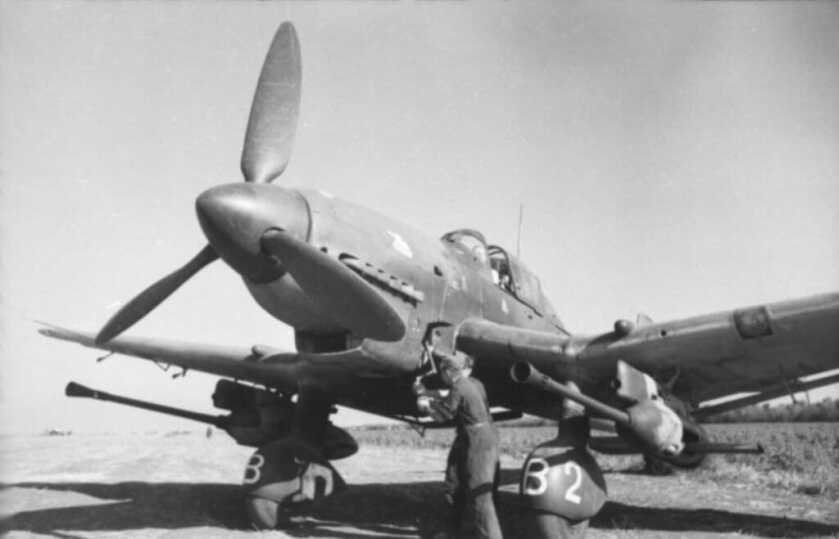
The Ju87G carried a pair of forward-firing 30mm cannons along with a 1,000kg bomb load. Defensive armament was upgraded to the two-barrel 7.92mm MG81Z machinegun system firing rearward. The most remarkable addition, however, arose from a suggestion by Rudel himself.
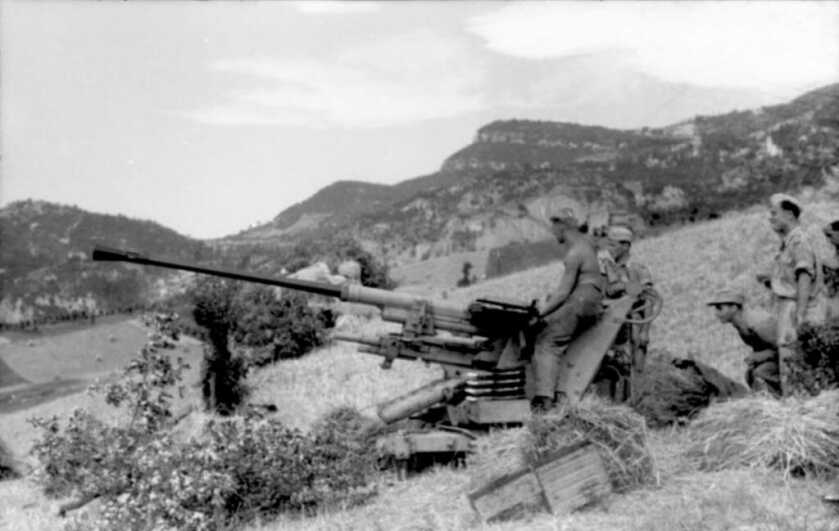
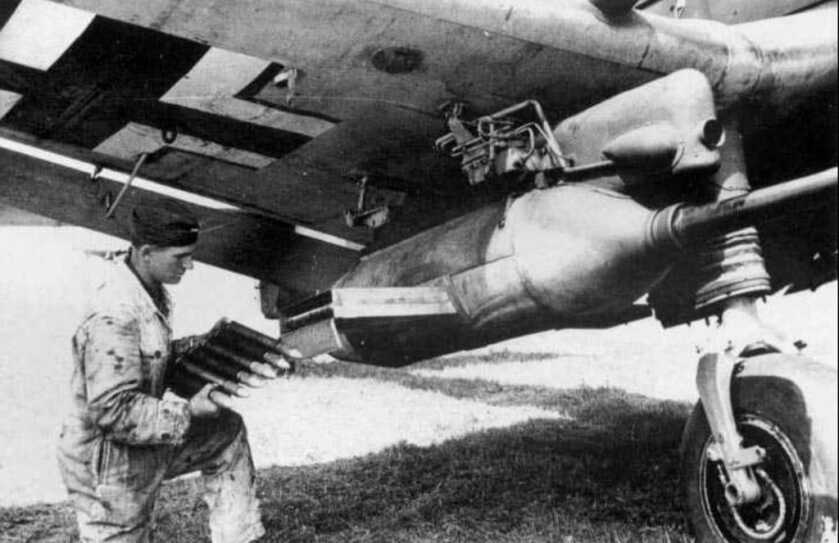
German engineers mounted two Flak 18 37mm autoloading cannons underneath the wings in faired gondolas. Each gun fed from a pair of integral 6-round, clip-fed magazines and fired Armor-Piercing Composite Rigid (APCR) rounds sporting hardened tungsten carbide cores. The official title of this weapon was the Bordkanon 3,7. This literally translates to “On-Board Cannon 37mm.”
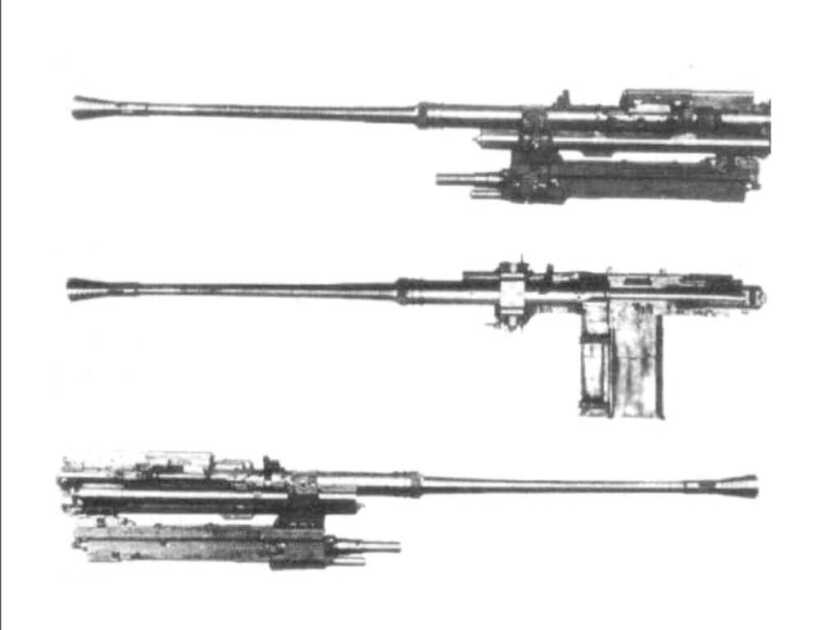
Each Bordkanon 3,7 weighed 650 pounds and was 11 feet 11 inches long. These fully automatic weapons operated via a short recoil action but cycled at a remarkably sedate 160 rounds per minute. The maximum effective range of these guns was considered to be around 500 meters.
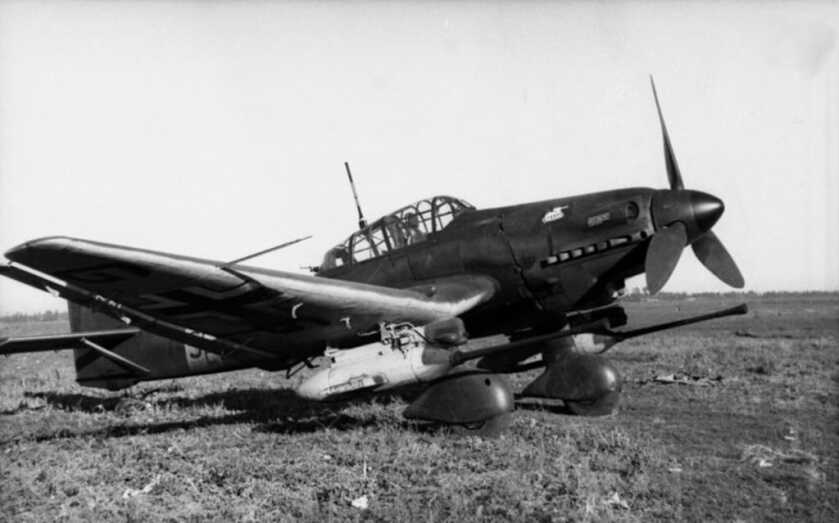
The goal of the Ju87G armed with the Bordkanon 3,7 was to produce a cost-effective method for killing Soviet tanks in large quantities. German tanks were expensive as was the large-caliber armor-piercing ammunition they fired. Most importantly, however, was that in tank-versus-tank engagements, enemy tanks were presenting their most resilient aspects.

By contrast, in the hands of an experienced ground-attack pilot like Rudel, the Ju87G allowed a top-attack profile wherein an armored vehicle might be hit through the roof where it was most vulnerable by these relatively inexpensive 37mm rounds. However, the system suffered from relatively poor accuracy. The bulbous external pods also seriously degraded the Stuka’s performance, leaving it vulnerable to attack by Soviet fighters.
The Final Score
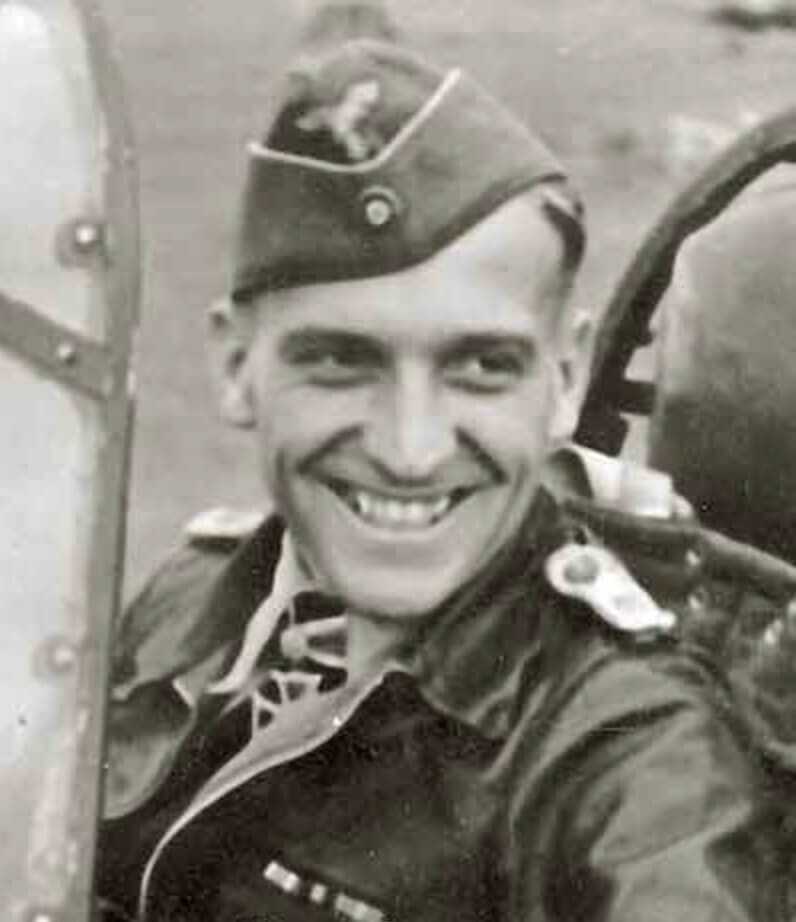
During the course of his four-year career, Rudel flew 2,530 combat missions. 430 of those were undertaken in the ground attack variants of the Fw190 fighter. The rest were at the controls of a Stuka.

Rudel ultimately destroyed 519 tanks, four armored trains, and more than 800 military vehicles. He took out 150 artillery emplacements along with numerous bridges and supply installations. In addition to the Soviet battleship Marat, he also destroyed a cruiser, a destroyer, and seventy landing craft. Along the way, he was credited with 51 aerial victories, 42 of which were fighter types along with 7 Ilyushin Il-2 Shturmovik ground-attack machines.
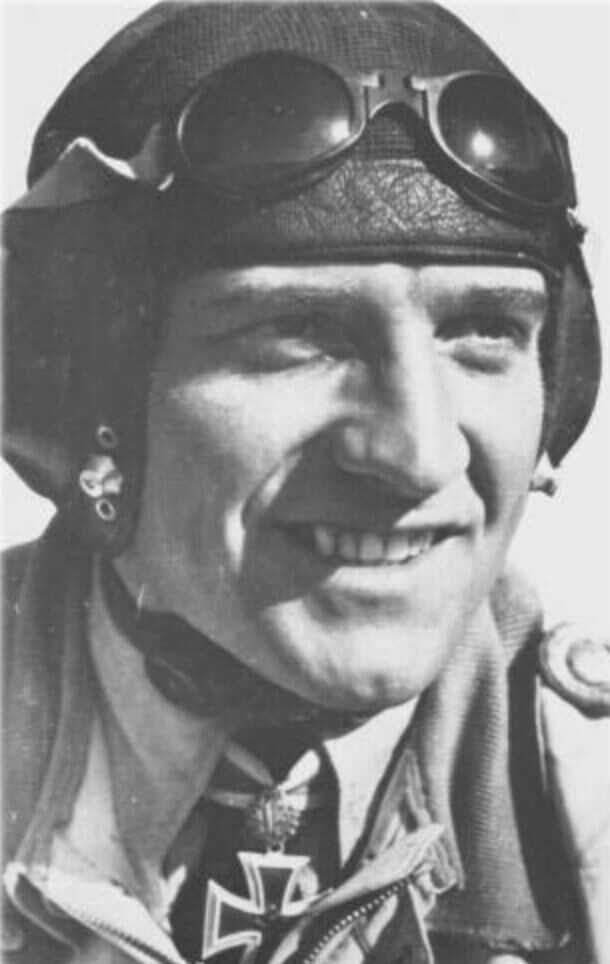
Rudel was shot down 30 times and personally rescued six stranded German aircrews from the enemy-held territory. He was wounded five times. On February 8, 1945, just three months before the end of the war, Rudel was badly hit in his right foot. He successfully coaxed his plane back to friendly lines with the help of his observer, but his leg was amputated below the knee. Six weeks later Rudel was back flying combat missions with a prosthesis.
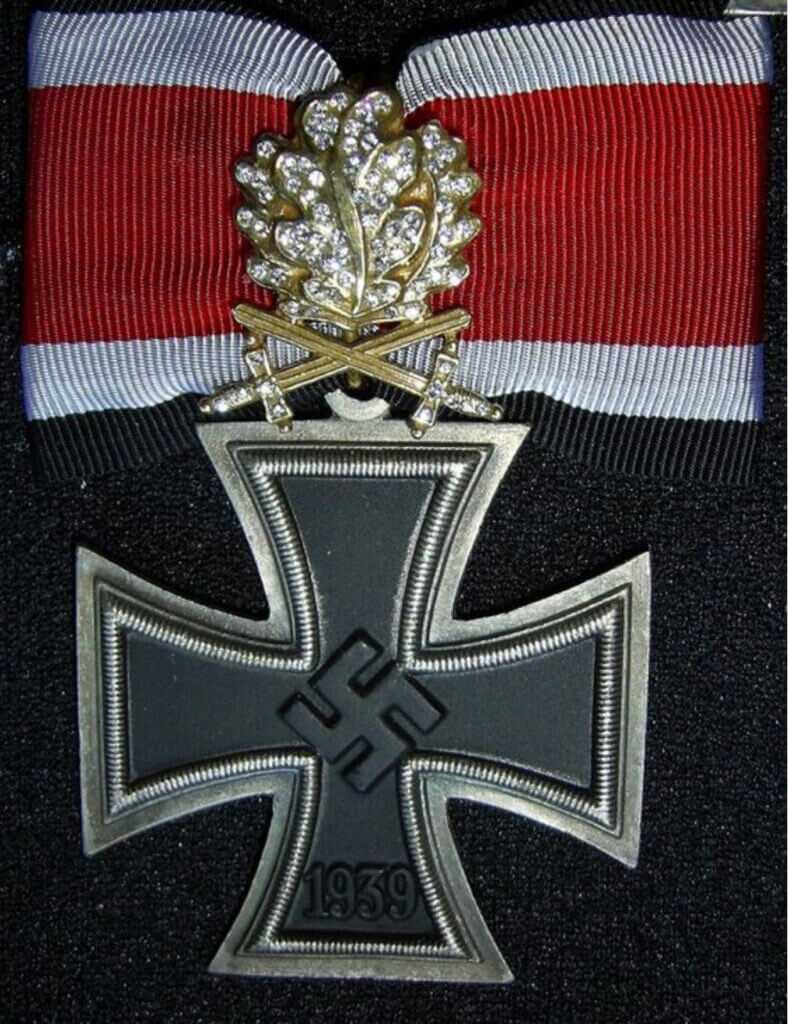
On December 29, 1944, Rudel was awarded the Knight’s Cross of the Iron Cross with Golden Oak Leaves, Swords, and Diamonds. Rudel was the only German soldier of the war to be so decorated.
The Rest of the Story

At the end of the war, Rudel hopped a plane and flew to American-held territory to surrender. Despite official requests, the Americans refused to hand him over to the Soviets. In 1948 he immigrated to Argentina covertly.
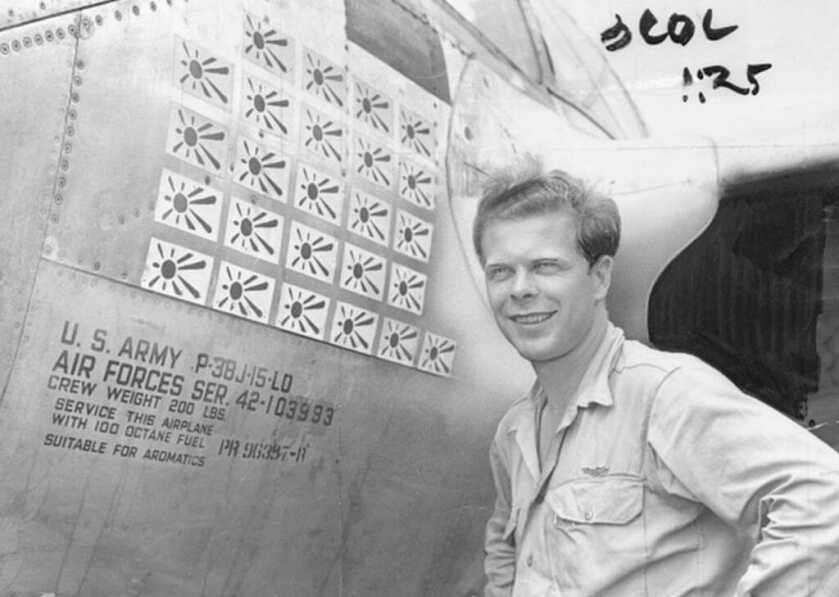
Hans-Ulrich Rudel’s feats of arms during World War 2 will never be bested. Major Richard Bong, the leading American ace of the war, rotated home with forty aerial victories. In the US military, successful pilots were taken out of combat roles and sent home to sell war bonds or train future generations of pilots. By contrast, German pilots flew until the war ended or they were killed. This is what allowed Luftwaffe aces to run up such astronomical kill counts.
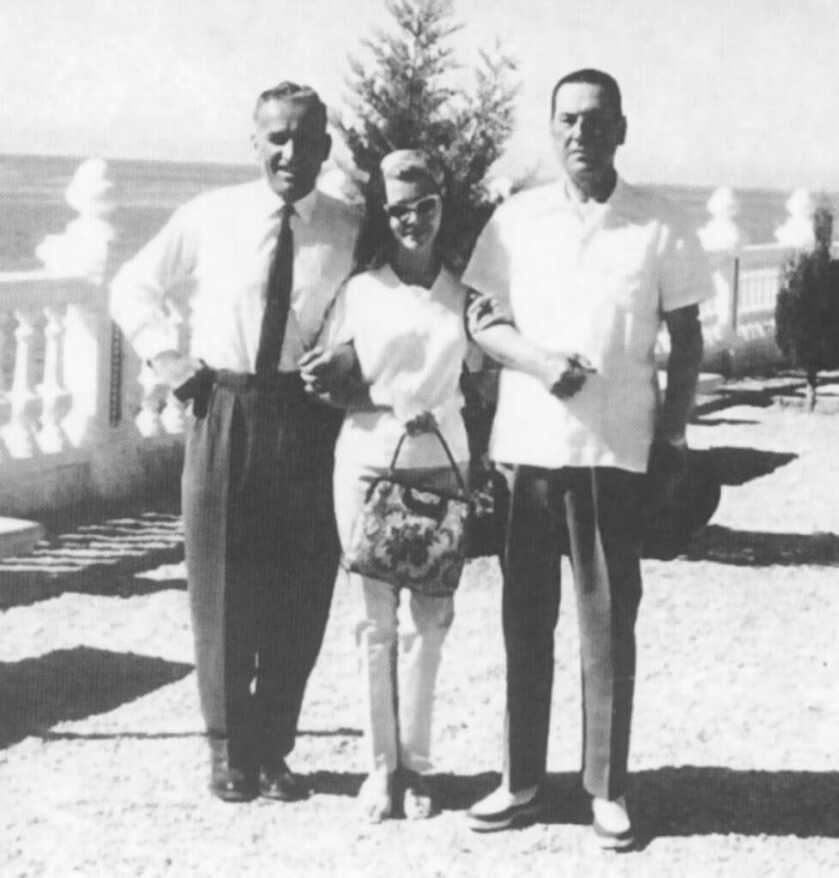
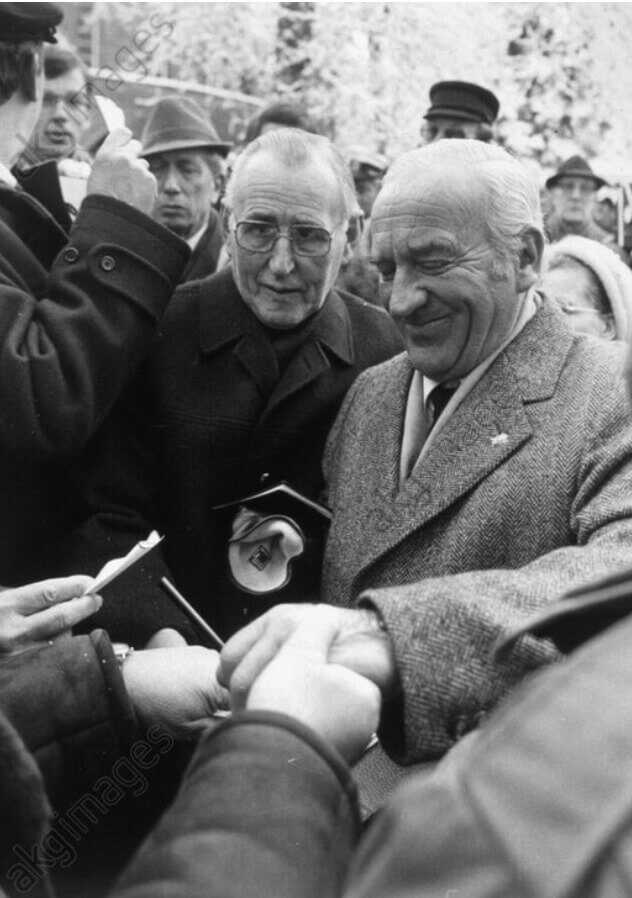
Rudel remained an unrepentant Nazi until his death. While in Argentina he supported and befriended escaped Nazi war criminals through a close relationship with Argentinian President Juan Peron and the Paraguayan dictator Alfredo Stroessner. He founded Kameradenwerk or “Comrades Act,” a relief organization for German war criminals.

Rudel assisted notorious death camp physician, Dr. Josef Mengele, to resettle and wrote several books that were overtly sympathetic to the Nazi cause. He made a good living as a military advisor and arms dealer in Argentina, Paraguay, and Chile. Rudel even served as a technical advisor during the development of the American A-10 Warthog ground-attack aircraft. Later in his life, Rudel became a pariah at public events due to his vocal National Socialist views.
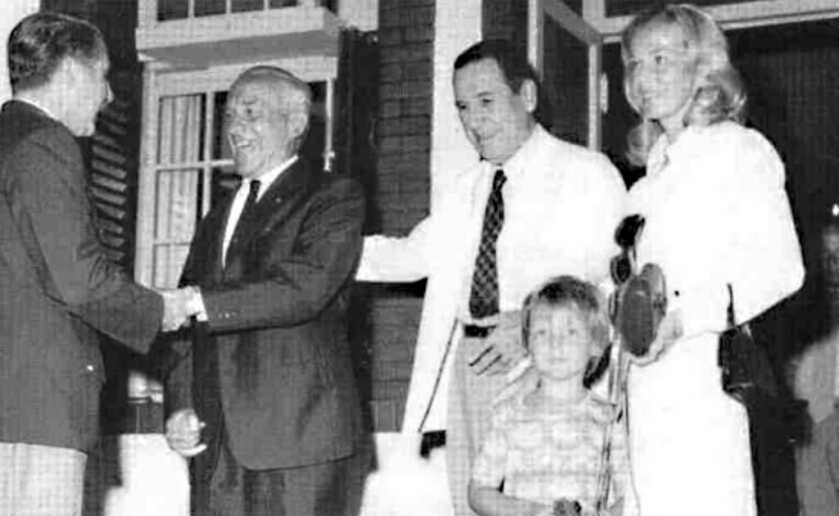
Rudel was married three times, in each case to a woman named Ursula, and fathered three sons. In 1970 he suffered a stroke. Twelve years later he had a second embolic event that was fatal.
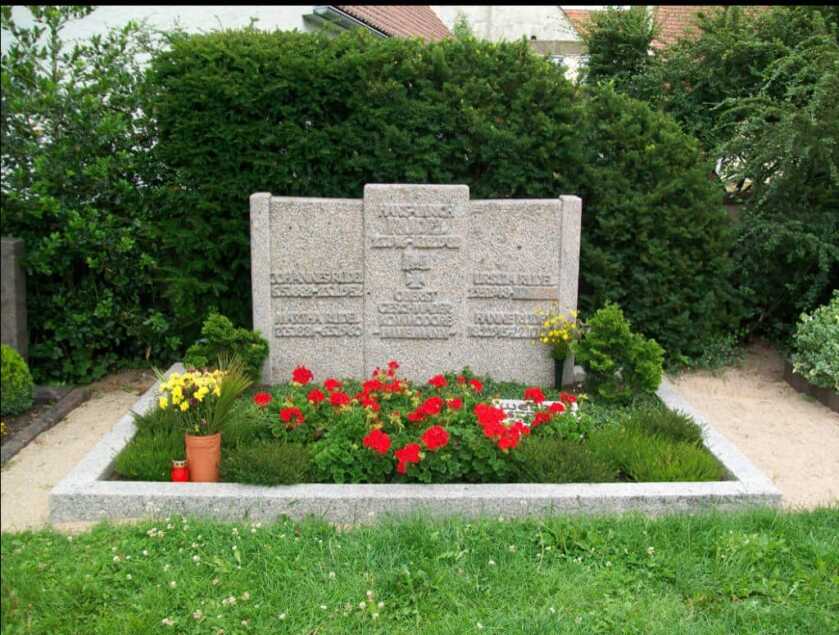
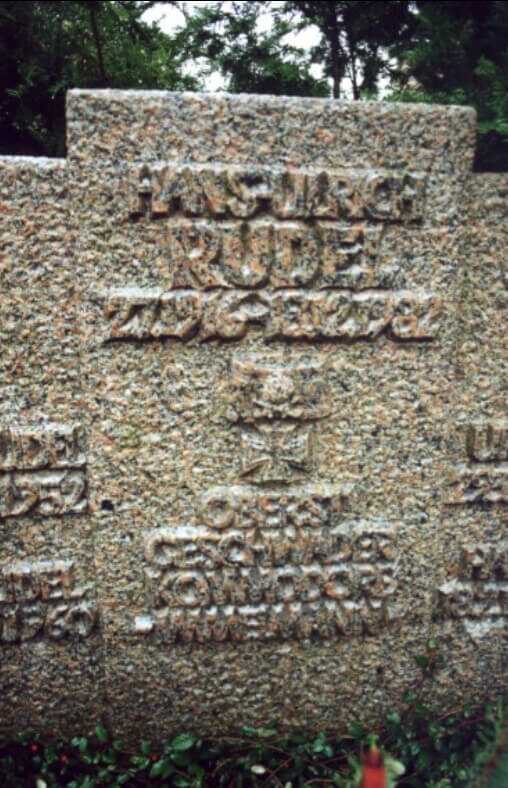
A pair of West German Phantom jets flew low over his grave during Rudel’s funeral. An outcry erupted later over Bundeswehr tactical aircraft paying tribute to an unrepentant Nazi. However, German Air Force officers claimed that the cemetery was underneath a popular military training route and that the timing of the flyby was random.


Who is the familar face behind Rudel in the opening photo?
Looks like Adolf Galland to me.
Kinda hate the love to this scoundrel. Committed nazi til he died. To me, that means he should have died really, really young. I try to believe in God, but this POS living a long happy life when kids die of cancer makes me skeptical.
I like the stories about the allies better, Will.
Be patient, YankeeDespot my brother, there will be plenty to come that focus more on the Good Guys. I appreciate your sticking with me.
Ah, the Problem of Evil. The ancient Greek philosopher Epicurus struggled with the same sticky quandary and wrote about it prolifically.
The practical evidence for the existence of God is fairly overwhelming. Here’s what cinches it for me. Just wander outside some evening that wants for an overcast and glance skyward. Pick a little black spot and ask yourself exactly what it is you’re looking at. That spot goes on forever–it never, ever stops–and there’s not a human being on the planet who understands it. To appreciate all the stuff around us that we cannot begin to comprehend and then summarily declare that there is no God seems a bit presumptuous to me.
As regards Rudel, lots of evil people are successful in the eyes of the world. Muammar Gaddafi was the 8th richest human who ever lived yet he died like a dog after having been sodomized with a bayonet.
“Do not store up for yourselves treasures on earth, where moths and vermin destroy, and where thieves break in and steal. But store up for yourselves treasures in heaven, where moths and vermin do not destroy, and where thieves do not break in and steal. For where your treasure is, there your heart will be also.”
Rudel indeed lived a long life, but I wouldn’t envy him now. “Vengeance in mine, says the Lord…”
Excellent reply Will! Blessings to you brother!!!
Vengeance is mine indeed!
That scripture you quote makes me not feel as bad that we didn’t turn rudely over to the nkvd. They’d have done horrible things to him but death would be his escape. When it comes to God’s punishment death is the beginning and there’s no escape
the story was great amazing history
Exactly
Well said
Hate a Nazi… love a warrior. I hope he is drinking, wenching and feasting with his Viking ancestors in Valhalla.
He’s actually burning in hell now awaiting his judgment day???
Great story! Did y’all know I too was a Stuka pilot? Yes its true. Not a real full size one. It was a cox powered flying model. It even had a red bomb that could be released. It had a little pilot and gunner in the cockpit also.It was controlled by a handle that had fishing line to move the flaps. Round and round Id go until it ran out of fuel or I got too dizzy to stand. Then came the time I got cocky and tried to do a dive bomb. Right into the ground. I had to E&E back to friendly lines- my dads house. I still have it up in the attic somewhere in a box. Maybe I’ll go find it and with that modern glue they have nowadays it could be put back togather. Look out Godless Soviets ,I will prowl the skies once more!
You note that Rudel was shot down 30 times. Surviving being shot down and being able to return to combat is an essential element in the stories of virtually all of highest scoring aces successes. Erich Hartman was shot down at least 26 times. One key seemed to be to get shot down over friendly lines, far more likely for German defenders than for allied invaders. And many other coincidences. The US’s second highest scoring ace in the ETO, 27 victory ace Robert Johnson should have been shot down before he scored any kills, but the cannon fire that ruined his P-47 also locked his canopy closed so that he could not bail out when any sensible person, including Johnson, would have done so. Unable to get out, Johnson nursed the ultra rugged P-47 back to England despite his badly damaged P-47 being attacked along the way by high scoring German ace Egon Mayer who shot into the P-47 until he ran out of ammunition. Johnson made it home and soon was the top scoring ace in theater. Still, but for a canopy that wouldn’t open, he surely would have been another POW.
Great Article, enjoyed very much, love history
“Stuka Pilot” By Hans Rudel
Rudel wrote a book titled “Stuka”…?
I read the book 15 years ago, it may be hard to find. Rudel was an animal as a pilot…
I also read “Stuka Pilot” as a young person. One aspect that struck me was his comment as his stature increased and he became a participant in high level planning meetings. He noted that as the generals considered a battle plan, the prevailing zeitgeist encouraged depots to optimistically report something like “Next Thurday, seven tanks”. What would actually happen would be four tanks operational, two tanks being serviced and one tank waiting for spares. And so, the attack would undermined by lack of resources.
The comment in the article that the BordKanon 3,7 only carried six rounds each helps explain Ruedel’s high mission count. When he was most active fighting tanks, he flew multiple missions per day from a forward air base. He mentions returning to base after dealing with a single tank, without being clear that used up the ammunition supply.
(Watching the “Fall of Kabul” while reading this article.)
The Warthog is probably the best ground attack/close air support fixed-wing ever built. It remains active despite several attempts by mental midgets to remove it from service.
Back to current events (Afghanistan)… regardless of having the best equipment and the VERY best warriors in the world, the U.S. is hobbled by inferior high-level brass, and completely crippled by idiotic politicians. If the war is worth fighting and spending lives… It should damn sure be worth winning!
“Winning” and “nation building” are often intertwined, but also contradictory. After WWII, we thought we could “nation build” and “democratize” cultures as we easily did with Japan and Germany. Sadly, that’s proven to be more difficult when dealing with religious zealotry and theocracies. Unless you can get the religious primate to acquiesce and “bless” the new nation (as the Emperor of Japan was coaxed into doing by MacArthur), the folks will ultimately revert back to the old system of doing things….
Absolutely correct. Your comment is refreshing. Now, as we move out of Afghanistan we have upped the bombing campaign in Somalia. Really? Our politicians and the military-industrial complex will always find a new adventure and reason to intervene in other countries under the guise of saving them.
The difference between Japan, Germany, and don’t forget Italy and Korea, is that we stayed and occupied them for several generations, all while imposing a constitution and government of our design upon then. They accepted because we had visited incredible destruction upon them, killed many of them who were enemies, and would do some more if needed.
Our failure in subsequent was is precisely due to our unwillingness to impose our will upon them, and force their compliance for several generations. Instead, we have politicians tying our forces hands behind their backs, and coddling the opposition, all while promising OUR unconditional surrender/with drawl at some date certain.
Hear, hear! Exactly what I am saying! WIN THE WAR regardless of how many “innocents” may be killed. Far more civilians died in WWII than soldiers. IF… the war is worth fighting… WIN IT!